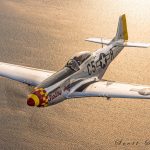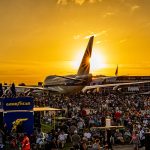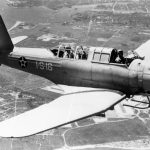The Planes of Fame Air Museum in Chino, CA, is home to several unique aircraft that in a few instances are the last of their kinds anywhere in the world, such as the Ryan FR-1 Fireball, and the subject of today’s article, the Mitsubishi J2M Raiden (雷電, “Lightning Bolt/Thunderbolt” in English), a land-based interceptor flown by the Imperial Japanese Naval Air Corps, that would be known to the Allies through its reporting name “Jack.”
In September 1939, as Germany launched its invasion of Poland, Japan had already been waging a massive war of territorial expansion and resource-extraction in China since 1937 in which the air arms of both Japan’s army and navy had wrestled air superiority from the Republic of China’s Air Force. Yet naval officials and aircraft engineers foresaw the need for a new land-based interceptor (or ‘Local Fighter’ (Oto-sen) in Japanese naval terminology) to defend Japan’s skies from high-altitude bombers. The IJN laid down the specifications for an interceptor that would fly at a maximum speed of 340 knots (629.7 km/h (391.2 mph)) at 6,000 m (19,685 ft), climb to 6,000 m in 5 minutes, 30 seconds, with a maximum ceiling of 11,000 m (36, 089 ft), an armament of two 20mm autocannons and two 7.7mm machine guns, and an armored bulletproof plate at the back of the cockpit. Mitsubishi formed a design team to work on this project, led by Jiro Horikoshi, the chief designer of the A6M Zero carrier-based fighter, with the result of their work being originally called the 14 Test Local Fighter (14 referring to 1939 being the 14th year of Emperor Hirohito’s reign) but would enter service as the J2M.


Fitted with a Mitsubishi Kasei (火星, Mars) 14-cylinder, two-row radial engine cooled by a cooling fan mounted in the cowling behind the propeller spinner, the J2M1 Raiden was first flown on March 20, 1942, but showed lower than expected performance, cooling issues, engine vibration, and collapsing undercarriages which delayed the type’s operational trials into December 1942. By December 1943, the 381st Kōkūtai (Naval air Squadron) at Balikpapan Airfield, Borneo, received the new J2M2 model with an upgraded Kasei engine that took the power output from 1,400hp to 1,850hp, and in February 1944, the first of the J2M3s, which replaced their 7.7mm machine guns for an additional pair of 20mm cannons were accepted into operational service. The Raiden, which became known to American pilots as the “Jack,” would see combat for the first time during the Battle of Philippine Sea flying out of airfields on Guam and Saipan, and would later fight American aircraft over the Philippines. However, the majority of the J2Ms remained in the Japanese Home Islands to defend against bombing raids carried out by Boeing B-29 Superfortresses, and were flown by highly trained pilots of the 302nd Air Corps in Atsugi, the 332nd Air Corps “Rainbow Unit” based at Iwakuni and later Naruo Airfield, the 352nd Air Corps “Kusanagi Unit” in Omura, and the Tainan Air Corps in Taiwan (called Tainan by the Japanese). The J2M3 became the primary variant during the war, and though its high-altitude performance was limited by the lack of a supercharger, its four 20mm cannons were deadly against B-29s, and Raiden pilots came to employ boom and zoom tactics to dive down on the B-29s and shoot down a few American bombers.

However, the Raiden was only produced in small quantities with the Mitsubishi factories building them and other Japanese aircraft being among the targets of the very B-29s they were sent out to destroy, and by the spring of 1945, J2Ms also clashed against American fighters such as F6F Hellcats and F4U Corsairs from the Essex-class fleet carriers and P-51D Mustangs and P-47N Thunderbolts from Iwo Jima and Okinawa. Although a new supercharger-equipped variant, the J2M5, was developed, by then it was too little, too late, and by the time Emperor Hirohito called for a ceasefire, only 621 J2M Raidens were ever produced, and of these only one has survived to the present day.

That example is J2M3 serial number 3014. This example was built in Mitsubishi’s Nagoya plant and flown in Japan by the 302nd Kōkūtai in Atsugi, where it was found by American occupational forces and sent to the United States for technical evaluation. There had already been some flight testing of the J2M Raiden by American pilots during the war, when one Raiden was even briefly flight tested in American colors over the Philippines out of liberated Clark Field in 1945, with other aircraft being evaluated by the US Army Air Force and US Navy in the USA and at least two captured by the British in Malaya being flight-tested by Japanese pilots under close British supervision. From all available records, s/n 3014 seems to have never been flight tested in America or even given an evaluation number as seen on those aircraft that were flight tested. It is possible, then, that perhaps 3014 was only used for ground instruction by American mechanics and technicians. But after its time in the US military ended, it was sold as surplus and acquired by the Frank Wiggins Trade School in Los Angeles, CA (now called the Los Angeles Trade-Technical College) for use as an instructional airframe.
By 1952, the Raiden was donated by the Frank Wiggins School to the Travel Town Museum, managed by the City of Los Angeles Department of Recreation and Parks in Griffith Park. There it was mislabeled as a Zero and was displayed outdoors alongside old trains and a few other surplus airplanes, but in 1958, Edward T. Maloney, the young founder of the Planes of Fame Air Museum (then simply called The Air Museum), saw the Raiden in Travel Town and decided to acquire it for his growing collection in Claremont, just outside his hometown of Pomona. Travel Town agreed to donate the J2M to him and he had it shipped to Claremont to join several other Japanese fighter aircraft already there, from a Nakajima Ki-84 Hayate “Frank” (now displayed in Japan), a Mitsubishi J8M1 Shūsui (a Japanese copy of the Messerschmitt Me 163 Komet rocket interceptor), and two Mitsubishi A6M5 Zeros, one which was restored to flying condition. After three subsequent moves to Ontario Airport in 1963, then to Buena Park in 1970, and finally to Chino airport in 1973, the Raiden now sits proudly on display inside the Planes of Fame’s Foreign Hangar in Chino, where it has been displayed for the last 50 years. Interestingly, the aircraft’s current paint scheme contains a combination of markings from two Kōkūtais, with two lightning bolts on the fuselage patterned off of those on aircraft of the 352nd Kōkūtai, while the tail code, ヨD-1158, reflects those seen on aircraft of the 302nd Kōkūtai, as those of the 352nd Kōkūtai would start with the number 352 before having a dash for the individual aircraft’s code (i.e., “352-23”). While the aircraft remains a static display, it has served as a reference guide for various scale model kits of the J2M Raiden and is often cited as one of the reasons Japanese aviation enthusiasts travel to the Planes of Fame Air Museum.
































